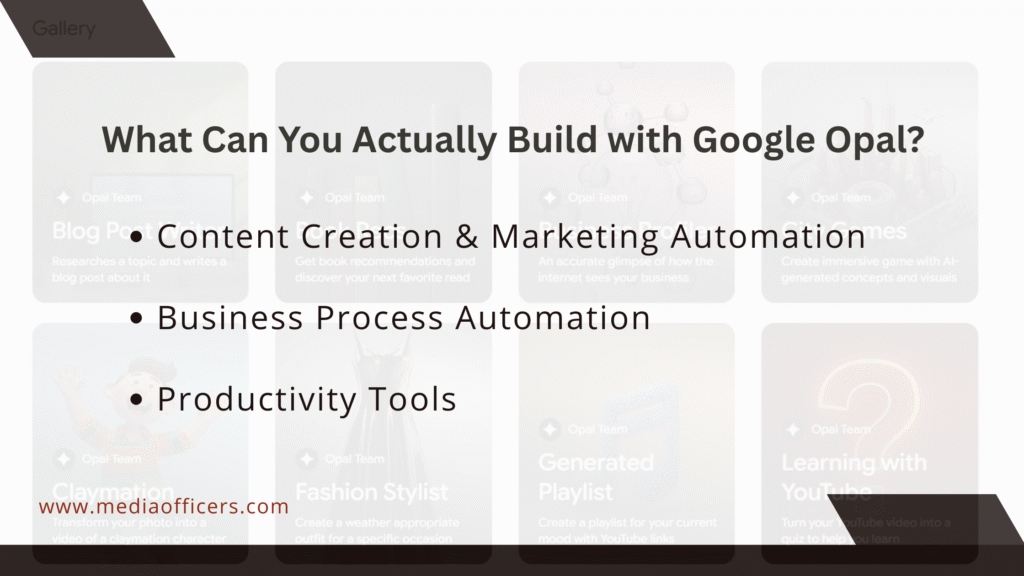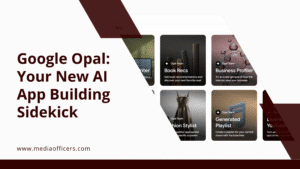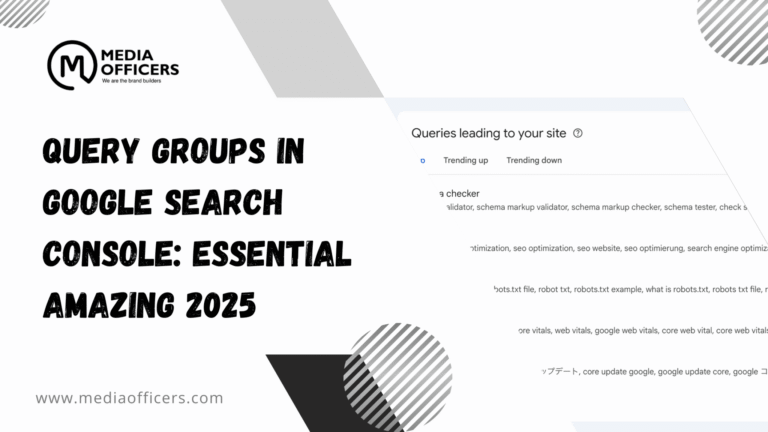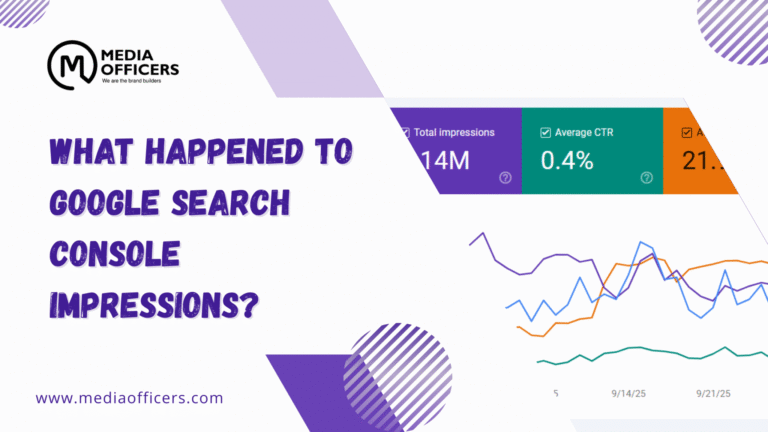Ever dreamed of transforming your innovative ideas into functional applications but found yourself lost in a labyrinth of complex code? For countless internet explorers, the barrier of programming languages has long stood between concept and creation. However, Google, a titan of innovation, is poised to dismantle this barrier with its latest groundbreaking venture from Google Labs: Google Opal. Launched in public beta in July 2025 for users in the U.S., Google Opal is an experimental, no-code AI app builder designed to redefine software creation. It promises to convert your plain English descriptions into sophisticated, functional mini-applications, ushering in an era of “vibe-coding” where intuition triumphs over syntax. This isn’t just a new tool; it’s a paradigm shift, democratizing AI-powered app development for everyone.
What is Google Opal?
Google Opal stands as a testament to Google Labs’ commitment to accessible innovation. It is an experimental no-code AI app builder, officially unveiled and made available in public beta for users in the United States in late July 2025. At its core, Opal is engineered to empower individuals, regardless of their technical background, to craft functional mini-applications. It achieves this by translating natural language descriptions into tangible software, complemented by an intuitive visual workflow editor. This ingenious approach effectively sidesteps the traditional steep learning curve associated with programming, making software creation accessible to a significantly broader audience—from agile marketers and imaginative content creators to data-driven business users. Its primary objective is to fundamentally simplify and accelerate the app-building process, turning abstract concepts into practical digital tools.
Google Opal is an experimental no-code AI app builder launched by Google Labs that allows users to create functional mini-applications using natural language descriptions and a visual workflow editor. It’s designed to make AI application development accessible to non-technical users, eliminating the need for traditional programming skills.
How Does Google Opal Work Its Magic?
The true marvel of Google Opal lies in its seamless integration of advanced artificial intelligence with a user-friendly interface, transforming high-level intent into working applications.
Natural Language & “Vibe-Coding”
At the heart of Opal’s functionality is its natural language interface. Users initiate the app creation process by simply describing their desired application logic in plain, conversational English. For instance, you could instruct Opal to “build a blog writer that researches a topic, outlines it, creates a banner image, and writes the full post.” Google‘s underlying AI then processes this descriptive input, interpreting the intent and generating the core application structure and its workflow. This innovative approach aligns perfectly with the burgeoning “vibe-coding” trend, a term popularized in the AI development sphere. Vibe-coding implies that the AI is responsible for generating the majority of the complex code from a high-level conceptual “vibe” or idea, freeing the user from the intricacies of syntax and focusing entirely on the desired outcome. It allows for a more intuitive, almost conversational, development experience.
Visual Workflow Editor
Once the initial natural language description is processed, Opal presents the nascent application’s workflow in a clear, interconnected visual format, consisting of various “nodes.” Each node represents a distinct step in the application’s logic—be it an input field, an output display, or an AI-driven process. This visual representation serves as a powerful yet accessible playground. Users can effortlessly view, alter, add, or remove steps using a streamlined toolbar or a familiar drag-and-drop interface. This provides a remarkable degree of fine-grained control over the app’s logic without ever needing to delve into the underlying code. The transparency of the visual workflow allows users to understand exactly how their instructions are being translated and executed, fostering confidence and enabling precise adjustments.
AI Model Integration
Underpinning Opal’s capability is its seamless integration and orchestration of Google’s formidable suite of AI models. The platform intelligently chains together various prompts and calls upon a selection of proprietary Google AI models to execute multi-step workflows with remarkable power and versatility. Key among these are:
- Gemini (likely Gemini 2.5 Pro): This advanced large language model is crucial for interpreting natural language inputs, generating text, processing application logic, and driving sophisticated conversational interactions within the app. Its application development capabilities are central to Opal’s core function.
- Imagen (likely Imagen 4): For tasks requiring visual elements, Opal leverages Imagen to generate high-quality images, such as banner images for blog posts or custom thumbnail designs.
- Veo (likely Veo 3): When the application necessitates dynamic visual content, Veo comes into play, enabling the generation of videos, including those with accompanying audio, for marketing materials or interactive experiences.
By intelligently combining these powerful models, Opal transcends simple text generation, allowing for the creation of rich, multi-modal applications that can perform a wide array of complex tasks.
Google Opal transforms natural language descriptions into visual, multi-step workflows, essentially “vibe-coding” your app idea into existence. Users simply describe what they want, and Google’s AI (like Gemini, Imagen, and Veo) translates it into interconnected visual components that can be easily edited via a drag-and-drop interface.
What Can You Actually Build with Google Opal?

The versatility of Google Opal extends across a broad spectrum of mini-applications and automation tasks, making it an invaluable tool for various professional and personal needs. Its no-code, AI-driven nature unlocks a new realm of possibilities for rapid prototyping and deployment.
Content Creation & Marketing Automation
Opal is a game-changer for content creators and marketing professionals. It empowers them to build custom apps that automate traditionally time-consuming tasks:
- Comprehensive Blog Post Generation: Imagine an app that not only researches a given topic but also structures an outline, generates a compelling banner image using Imagen, and then drafts the full blog post, all with a single prompt.
- Dynamic Marketing Material Design: Create mini-apps for designing eye-catching thumbnail images for YouTube videos, crafting persuasive product descriptions for e-commerce sites, or even generating short, engaging marketing videos complete with audio via Veo. This allows for rapid A/B testing of creative assets.
- Ad Copy and Social Media Content: Develop tools to generate varied ad texts for different platforms or draft a week’s worth of social media posts tailored to specific campaigns and tones.
Business Process Automation
For businesses seeking to streamline operations and enhance efficiency, Opal offers a powerful solution for automating tedious, domain-specific tasks:
- Automated Customer Support Replies: Build an app that takes a customer support ticket as input and drafts a polite, contextually relevant reply, significantly reducing response times.
- Sales Data Analysis & Reporting: Create mini-apps that ingest sales data, analyze key metrics, and generate visual charts or concise daily sales reports, providing immediate insights for sales teams.
- Custom Internal Productivity Tools: Develop bespoke tools for internal use, such as applications for creating daily task lists, automating data entry, or generating personalized meeting summaries from transcribed audio. This can include simple CRM tools tailored to specific departmental needs.
- Onboarding Workflows: Design apps that guide new employees through onboarding processes, providing information, collecting necessary documents, and setting up initial tasks.
Productivity Tools
Individuals and teams can leverage Opal to develop custom tools that directly enhance their daily productivity:
- Intelligent News Scrapers: Build an app to scrape news headlines from specified sources, summarize them using Gemini, and deliver a daily briefing tailored to your interests.
- Personalized Planners & Organizers: Create simple planners that help manage tasks, appointments, and reminders, or even generate personalized math exercise sets for students to aid learning.
- Educational Content Generation: Develop apps that can analyze a YouTube video and automatically generate a quiz, flashcards, or a summarized study guide, revolutionizing how students prepare.
- Simple Games & Interactive Experiences: For hobbyists or educators, Opal can even be used to prototype simple interactive games or simulations, demonstrating its broad creative potential beyond purely utilitarian applications.
Rapid Prototyping & Innovation
Perhaps one of Opal’s most significant contributions is its ability to accelerate the innovation cycle. It provides an agile environment for quickly demonstrating proofs of concept (PoCs) for AI ideas and complex workflows. This rapid iteration capability means that innovative solutions can be conceptualized, prototyped, and tested in minutes or hours rather than weeks or months, significantly reducing the risk and cost associated with early-stage development. Business users, subject matter experts, and non-technical innovators can now directly experiment with AI, turning abstract concepts into functional demonstrations that can inform strategic decisions and drive future development. This democratizes the initial stages of AI product development, fostering a culture of experimentation and bottom-up innovation across organizations.
Is Google Opal Free?
The question of cost is always paramount, especially for a tool as promising as Google Opal. As of its public beta launch in July 2025, Google Opal is currently free to use. This strategic decision by Google Labs is designed to encourage widespread adoption, foster a robust user community, and gather invaluable feedback during its experimental phase. This “free access for feedback” model is common for new, disruptive technologies as companies seek to refine their offerings based on real-world usage.
Geographical Availability
For the time being, Google Opal’s public beta is exclusively available to users located in the United States. Access requires a standard Google account, and the entire experience is web-based, meaning no local installation is needed. This geographical restriction is typical for experimental Google products, allowing them to focus on a controlled user base before a potential wider international rollout.
Future Pricing Model
While the current “free” status is a significant draw, it’s widely anticipated that this will be a temporary arrangement. Given the substantial computational costs associated with running powerful underlying AI models like Gemini, Imagen, and Veo, a consumption-based pricing model is the most likely future direction for Google Opal. This model would align with Google’s existing enterprise AI services, such as Google’s Generative AI App Builder and Vertex AI Search, where users pay based on their actual usage of the AI models and associated computational resources (e.g., number of API calls, amount of data processed, complexity of generations).
It’s also worth noting that Google has introduced a broader Google Developer Program monthly plan for $24.99/month. This program offers various benefits, including Google Cloud credits for Vertex AI and Google AI Studio, and access to Gemini Code Assist Standard, along with Firebase Studio Workspaces. While not directly tied to Opal’s beta, it signals Google’s intent to monetize its advanced AI capabilities through flexible developer-focused subscriptions and usage-based models, which Opal will likely eventually integrate into. Users should be prepared for a transition to a paid model as Opal matures and exits its experimental phase, with pricing structured to reflect the value and resources consumed by the AI-driven applications created.
Yes, Google Opal is currently free to use during its public beta phase in the United States. Google has not yet announced a definitive pricing model, but it is expected that future versions might adopt a consumption-based model, given the computational costs of the underlying AI.
The Good, The Bad, and The Beta: Current Opinions & Limitations
As an experimental tool, Google Opal is currently navigating its public beta phase, and like any nascent technology, it comes with a mix of highly praised strengths and acknowledged limitations. A balanced perspective is crucial to understanding its current utility and future trajectory.
Strengths: Revolutionizing Accessibility and Speed
User feedback and expert analyses consistently highlight several transformative advantages of Google Opal:
- Democratized Accessibility: Perhaps Opal’s most celebrated strength is its profound impact on democratizing AI development. By eliminating the need for traditional programming skills, it opens the floodgates for a vast, non-technical audience—including marketers, business analysts, educators, and creative professionals—to build powerful AI-powered applications. This empowers subject-matter experts to directly solve their own challenges.
- Intuitive Ease of Use: The natural language interface, combined with the visual workflow editor, makes app creation feel akin to “sketching an idea.” Users can articulate their vision conversationally, and Opal translates it into a tangible workflow, making the process remarkably intuitive and user-friendly. This low barrier to entry is a significant draw.
- Unmatched Rapid Prototyping: Opal excels at accelerating the prototyping of AI ideas and workflows. It allows for the swift creation and demonstration of functional proofs of concept in minutes, drastically cutting down the time and resources typically required for early-stage development. This speed fosters agility and continuous innovation.
- Transparent Visual Control: While no-code, the visual editor provides a clear, digestible representation of the app’s logic. Users can see the interconnected nodes, understand the flow of information and AI processes, and easily tweak individual steps, prompts, or integrated tools without touching complex code. This level of visual transparency and control is highly valued.
- Powerful Google AI Integration: Leveraging Google’s formidable AI ecosystem, including advanced models like Gemini (specifically Gemini 2.5 Pro for text and logic), Imagen (for image generation), and Veo (for video generation), ensures that apps built on Opal are powered by cutting-edge capabilities, enabling sophisticated multi-modal outputs.
Limitations & Criticisms: The Road to Maturity
Despite its promising debut, Google Opal, in its experimental beta phase, faces several limitations and has drawn constructive criticisms from its early adopters:
- Inherent Experimental Status: As a Google Labs “experiment,” Opal is still under active development. This means that features, stability, and even the user interface are subject to change, which can sometimes lead to inconsistencies or unexpected behavior. It’s a platform evolving in real-time.
- Geographical Restrictions: Currently, Opal remains confined to users within the United States. This significant geographical limitation restricts its global reach and the diversity of feedback Google can gather, hindering its potential for wider international adoption.
- Desire for Greater Control & Transparency: A common critique is the longing for more precise control over the generated nodes and, for advanced users, access to the underlying code. While the visual editor is intuitive, some users desire the ability to delve deeper, explicitly add/remove instructions, or inspect the AI’s internal “chain-of-thought” (CoT) reasoning to better understand how it arrives at solutions or to engineer around its guardrails.
- Challenging Sharing Mechanisms: The current sharing functionality is relatively basic. Apps are shared via a simple URL, and access often requires a Google account. More critically, users report difficulties with truly public sharing or embedding apps into other web pages, which limits their utility for broader public-facing applications or seamless integration into existing websites. Direct API access to Opal apps is also not yet supported.
- Inconsistent Output Quality & Reliability: As with many generative AI tools, the quality and reliability of AI-generated outputs can be inconsistent. Users have reported instances of subpar or inaccurate AI image generation (e.g., generating an illustration instead of a map image), and failures in API calls that lack clear error messages, making debugging difficult. There’s also a limited free quota for certain generations, like images.
- API Integration Hurdles: While Opal integrates with Google’s core AI models, integrating more specialized external APIs can be a challenge. Users sometimes need to manually register these APIs, and issues like content security policy directives can prevent external elements (like maps) from rendering, with no direct way for users to edit the HTML to resolve such conflicts.
- Lack of Auto-Iteration: A notable functional limitation is Opal’s current inability to smartly loop through multiple items or variables automatically. This means repetitive tasks often require manual intervention, reducing the potential for true end-to-end automation for certain workflows.
- Security & Data Concerns (“Shadow IT”): The ease of app creation raises legitimate concerns, particularly for enterprise adoption. The potential for “shadow IT” (where non-security experts build applications outside IT oversight) could lead to misconfigurations, data leakage, or security vulnerabilities in AI-generated code. A 2025 GenAI Code Security Report, for instance, indicated that AI-generated code introduced vulnerabilities in 45% of curated coding tasks across LLMs. Furthermore, since apps are hosted on Google servers and utilize proprietary models, questions about data ownership, intellectual property, and privacy are emerging, making it less suitable for mission-critical projects requiring strict data sovereignty or complex authentication beyond a simple Google login. Opal is not yet designed for full backend systems or real-time applications that require direct database hooks or advanced user account management.
In essence, Google Opal is a powerful concept for democratizing AI app development and accelerating prototyping. However, its “beta” status means users should approach it with an understanding of its current limitations, which Google is expected to address as the platform matures.
What’s Next for Google Opal? The Future of AI App Development
The introduction of Google Opal marks a significant moment in the evolution of software development, signaling Google’s long-term vision for natural language interfaces as the primary means of creating digital tools. As an experimental product, its future is dynamic, driven by user feedback and the relentless pace of AI innovation.
Broader Release & Continued Refinement
The most immediate and anticipated development for Google Opal is a broader release. Based on the feedback gathered from the U.S. public beta, Google is expected to continue refining the platform, enhancing its stability, and expanding its feature set. A wider international rollout beyond the United States is highly probable, allowing a global audience to experience and contribute to its development, further accelerating its maturation. This iterative refinement process will likely address many of the current limitations, such as inconsistent outputs or API integration challenges, making the tool more robust and reliable.
Deeper Integrations and Enhanced Customization
As Opal evolves, expect significantly deeper integrations with Google’s extensive ecosystem and beyond:
- Google Cloud & Firebase: Future iterations are likely to offer seamless integration with Google Cloud services like Firebase for backend services (database, authentication, hosting) and Google Cloud Functions for serverless, dynamic tasks. This would enable the creation of far more complex, scalable, and dynamic applications that go beyond static mini-apps, allowing for persistent data storage, real user accounts, and sophisticated server-side logic.
- Google Workspace Integration: A key prediction for 2025 and beyond is the direct integration of Opal-built apps into Google Workspace services such as Gmail, Google Drive, and Google Sheets. Imagine creating a custom AI assistant that drafts emails directly in Gmail, or a data analysis tool that pulls information from Google Sheets and generates reports within Drive. This would transform how millions of business users interact with their daily productivity suites.
- More Granular Control: Google is likely to respond to user demand for greater control. This could manifest as more precise manipulation options within the visual editor, advanced configuration settings for AI models, and potentially even controlled access to snippets of underlying generated code for highly customized scenarios, balancing simplicity with power.
Setting New Standards and Shaping the Industry
Opal isn’t just a new product; it’s a statement about the future of software creation:
- Accessible, Community-Driven Prototyping: Opal is poised to set new standards for accessible, community-driven prototyping in the AI-driven, code-free app creation space. Its user-friendly nature could foster a new generation of “citizen developers” who contribute innovative solutions from diverse backgrounds, creating a vibrant marketplace for AI mini-apps, possibly even an “app store” or marketplace for sharing and selling these creations.
- Impact on Software Development: The trajectory of Opal signals Google’s conviction that natural language interfaces will become the cornerstone of software development. For certain types of applications, traditional coding may become increasingly less necessary, shifting the focus from how to build to what to build. This will force traditional software development to adapt, focusing on highly complex, custom solutions or integrating AI-generated components.
- Competitive Evolution: Opal’s presence intensifies competition in the no-code/low-code AI space, challenging existing players like Microsoft’s Power Platform and Copilot Studio, as well as creative tools like Canva and Figma, and even workflow automation platforms like Zapier and n8n. These platforms will need to innovate by incorporating similar intuitive AI interfaces to remain competitive.
While the official Google Opal is a distinct product focused on app building, it’s also worth noting the broader, more speculative discussions around an “Open Protocol for Autonomous Learning” (OPAL) that envisions a decentralized AI network blending AI, blockchain, and decentralized computing. While Google’s product focuses on democratizing creation within its ecosystem, the very name “Opal” can evoke these grander visions of a future where AI is pervasive and autonomously learning, albeit distinct from the immediate product. Google Opal’s tangible steps in 2025 are, however, firmly laying the groundwork for a more intuitive, AI-powered future of application development.
Google Opal is an experimental no-code AI app builder launched by Google Labs in July 2025, enabling users to create functional mini-applications using natural language descriptions and a visual workflow editor. It allows anyone, including non-developers, to “vibe-code” ideas into apps by leveraging Google’s AI models like Gemini, Imagen, and Veo.
FAQs
Is Google Opal a real product?
Yes, Google Opal is a real, experimental AI tool launched by Google Labs in public beta in July 2025. It allows users to build “mini-apps” using natural language descriptions and visual workflows.
Who can use Google Opal?
Google Opal is designed for a broad, non-technical audience, including business users, marketers, creators, students, and self-starters who want to build AI-powered applications without traditional programming skills. It is currently available to users in the U.S.
What kind of AI models does Google Opal use?
Google Opal harnesses Google’s proprietary AI models, including Gemini (likely Gemini 2.5 Pro for text and app logic), Imagen (for images), and Veo (for video), to power its app generation capabilities.
Can I share apps made with Google Opal?
Yes, once you create an app in Google Opal, you can publish it online and receive a shareable link. Others with a Google account can then access and interact with your mini-app. However, public embedding or direct API access is not yet fully supported.
Is Google Opal available outside the US?
As of its public beta launch in July 2025, Google Opal is currently only available to users in the United States. A wider international rollout is possible in the future, based on user feedback and development.
Is Google Opal free to use?
Yes, Google Opal is currently free to use during its experimental public beta phase in the United States. While currently free, a consumption-based pricing model is anticipated in the future, given the computational costs of the underlying AI models.
What is “vibe-coding” in the context of Google Opal?
“Vibe-coding” refers to Google Opal’s approach where users describe their app’s desired functionality in plain, natural language, and Google’s AI generates the majority of the code or workflow from this high-level “vibe” or idea. It shifts the focus from writing code to expressing intent.
What are some limitations of Google Opal?
Current limitations include its experimental status (features can change), geographical restrictions (U.S. only), limited fine-grained control over underlying code, basic sharing options (no direct embedding), occasional inconsistencies in AI-generated output quality, and challenges with integrating complex external APIs without clear error messages. It also does not yet support auto-iteration for multiple items.





